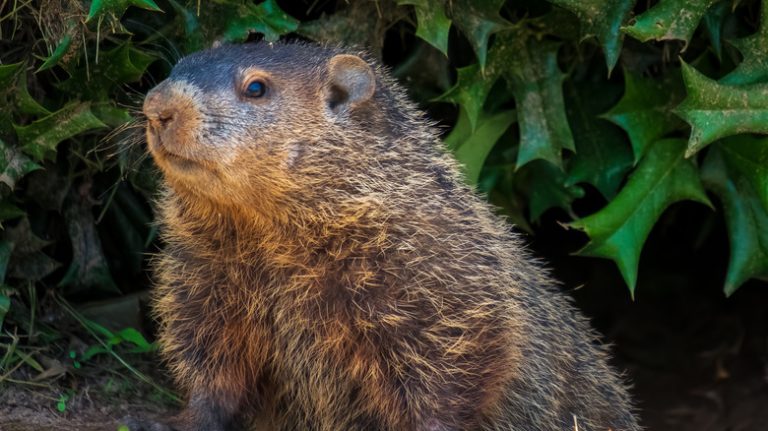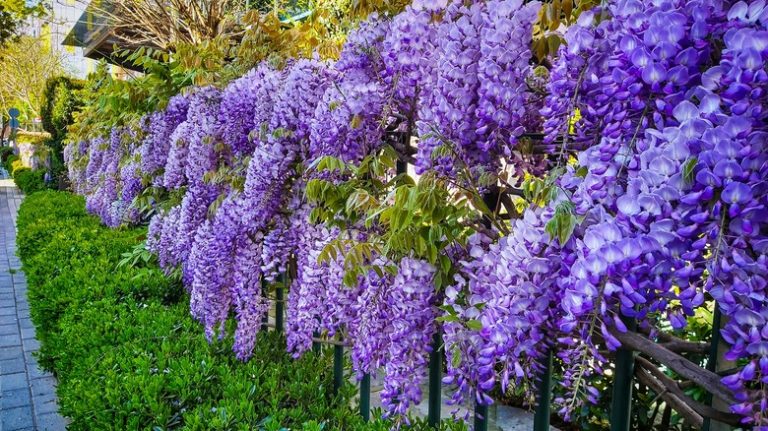The Jasmine vine, also known as Jasminum polyanthum, is a true jasmine that is well-loved by gardeners for its fragrant blooms. This vine is native to the south and is easy to grow in a sunny, well-draining location. Many gardeners choose to plant the jasmine vine near a lattice or fence, where it can grow and climb, creating a beautiful structure for the garden.
The jasmine vine is a shrubby plant that can grow quite tall if given the proper care. It has delicate, star-shaped flowers that bloom in the spring and summer, filling the air with a sweet fragrance. The foliage is also attractive, with dark green leaves that provide a nice contrast to the blooms.
When it comes to care, the jasmine vine is relatively easy to maintain. It needs regular watering, especially during the hot summer months, and can benefit from a light application of fertilizer. Pruning is also important to keep the vine in check and to encourage new growth. Gardeners should trim the jasmine vine in late winter or early spring, cutting back the stems to about two feet in length. This will help promote new growth and ensure that the plant stays healthy and full.
One of the most frequently asked questions about the jasmine vine is how to propagate it. The easiest way to grow a jasmine vine is from cuttings. Simply take a plastic potting cell and fill it with a mixture of peat moss and perlite. Dip the cut end of the jasmine vine into a rooting hormone and plant it in the potting cell. Place the pot in a sunny location and keep the soil moist but not waterlogged. With proper care, the jasmine vine should root in about four to six weeks.
While the jasmine vine is a beautiful and fragrant plant, it can also be invasive if not properly controlled. It is important to keep an eye on the vine and trim it back as needed. Some gardeners opt to plant the jasmine vine in a container or use a neem oil spray to keep it in check. This way, the plant can be enjoyed without any worries of it spreading too much.
In conclusion, the jasmine vine is a versatile plant that is loved for its fragrant blooms and attractive foliage. It is easy to care for and can be grown in a variety of locations, from a sunny garden bed to a container on a patio. Whether you are a seasoned gardener or just starting out, the jasmine vine is a fantastic addition to any garden.
Did you know? The jasmine vine is also known as “angel wing” jasmine because of the shape of its flowers.
Useful tips: If you have any questions about growing jasmine vines or if you need more information, don’t hesitate to ask other experienced gardeners. They are the best source of information and can provide helpful tips and advice.
Growing Jasmine Plant Information For Growing And Care Of A Jasmine Vine
When it comes to growing jasmine plants, the most common and well-known variety is the jasmine vine. They are easy to grow and are loved by gardeners for their beautiful foliage and scented blooms. Here are some tips on how to grow and care for a jasmine vine.
| Plant Type | Vine |
| Height | Up to 15 feet |
| Habit | Vining |
| Light | Full sun to partial shade |
| Zone | 7-10 |
| Soil | Well-draining soil |
| Water | Regular watering, allowing the soil to dry slightly between waterings |
| Spacing | 6-8 feet apart |
| Winter Hardiness | Can tolerate light frost |
Jasmine vines should be planted in a sheltered location, as they can be damaged by strong winds. They can be trained to grow up a lattice or wall, or they can be left to sprawl along the ground. It’s important to give them enough space to grow, as they can become invasive if not properly managed.
The best time to plant jasmine vines is in the spring or early summer. They prefer well-draining soil and should be watered regularly. However, be careful not to overwater, as this can lead to root rot. Lightly pruning the vines after they finish blooming will help to maintain their shape and promote new growth.
When it comes to pests and problems, jasmine plants are usually relatively pest-free. However, they can sometimes be affected by aphids or whiteflies. Treating the plants with neem oil can help to control these pests.
Propagation of jasmine vines can be done through cuttings. Simply take a cutting from a healthy, woody stem and place it in a potting mix. Keep the soil moist and the cutting should root within a few weeks. True jasmine plants, like Arabian jasmine (Jasminum sambac) or Star jasmine (Jasminum polyanthum), are the best types to propagate from cuttings.
Indoor jasmine plants should be placed in a sunny location and watered regularly. They can be repotted every 2-3 years using a well-draining potting mix. During the winter months, it’s important to provide some extra humidity for the plants, as indoor environments can be quite dry.
In conclusion, growing and caring for a jasmine vine is relatively easy. With the proper conditions and care, these beautiful and scented vines will thrive in your garden or indoors, providing you with lush foliage and fragrant blooms.
Jasmine Plants
Jasmine plants are known for their beautiful and fragrant yellow blossoms. There are several types of jasmines, including the Confederate jasmine, Jasmine polyanthum, and Angel Wing jasmine. These plants can be grown both indoors and outdoors, depending on the specific type.
When growing jasmine plants, it is important to provide adequate spacing between the plants. They should be spaced at least 2-3 feet apart to allow for proper air circulation and growth. Jasmine plants can be grown from seeds or cuttings. If starting from cuttings, it is best to fill a pot with well-draining soil and plant the cuttings approximately 1 inch deep in the soil.
Jasmine plants thrive in bright, sunny locations. They need at least 6-8 hours of direct sunlight per day to bloom properly. When growing jasmine indoors, it is important to place the plants near a window that gets plenty of sunlight.
Jasmine plants do not require a lot of fertilizer. It is best to lightly fertilize them a few times during the growing season, using a balanced fertilizer. Be sure to follow the instructions on the fertilizer packaging for the best results.
Pruning is an important part of caring for jasmine plants. It is best to trim the plants after they have finished blooming to maintain their shape and height. The woody stems can be pruned back lightly to encourage new growth and more blossoms.
Jasmine plants are generally pest-free, but they can sometimes attract aphids and mealybugs. If you notice any signs of pests, it is best to treat them early with a neem oil spray. Neem oil is an organic insecticide that is safe to use on jasmines and other plants.
Overall, jasmine plants are easy to grow and care for. They can be used in a variety of ways, such as climbing up lattice or a fence, or as shrubby ground cover. Their beautiful and fragrant blossoms make them a popular choice for gardens and landscapes. Whether you are looking to add some color and scent to your outdoor space or brighten up your indoor area, jasmine plants are a great choice.
If you have any questions or need more information on how to grow and care for jasmine plants, consult a gardening expert or visit a local nursery for advice and tips.
How to Grow Jasmine
Jasmine is a beautiful and fragrant vine that can fill your garden with stunning blossoms and a delightful scent. In order to successfully grow jasmine, there are a few key steps you need to follow.
1. Choose the right location: Jasminum thrives in a sunny spot, preferably facing south. It needs a sheltered area, such as a fence or trellis, to provide support for its vining habit.
2. Prepare the soil: Jasmine requires well-draining soil that is rich in organic matter. Before planting, amend the soil with compost or well-rotted manure to ensure it has the proper nutrients.
3. Plant the jasmine: Dig a hole that is twice the size of the root ball and place the jasmine plant in the hole. Fill in the hole with soil, lightly pressing it down to eliminate any air pockets.
4. Water regularly: Jasmine needs regular watering, especially during its growing cycle. However, be careful not to overwater as it can cause root rot. Allow the soil to dry slightly between waterings.
5. Provide support: As jasmine grows, it will need a structure to climb on. Use a trellis, fence, or wing to support the vine and help it grow in the desired direction.
6. Prune when necessary: Pruning jasmine is not necessary unless it becomes invasive or starts encroaching on other plants. However, you can prune it after blooming to maintain its shape and promote new growth.
7. Protect from pests: Jasmine is relatively pest-free, but it can occasionally be attacked by aphids or other common garden pests. Monitor the plant regularly and treat any infestations with neem oil or a suitable pesticide.
8. Fertilize appropriately: Jasmine plants benefit from regular fertilization, especially during the growing season. Use a balanced fertilizer and follow the instructions on the packaging for best results.
9. Propagate jasmine: Jasmine can be easily propagated through cuttings. Just take a cutting of a healthy stem, remove the leaves from the bottom, and plant it in a small container filled with well-draining soil. Keep the soil moist and place the container in a sunny spot.
By following these simple steps, you can successfully grow jasmine and enjoy its beautiful blooms and fragrant blossoms. Remember to provide it with the right conditions, water it regularly, and take care of any pests or diseases that may arise. With proper care, your jasmine vine will thrive and bring beauty to your garden year after year.



